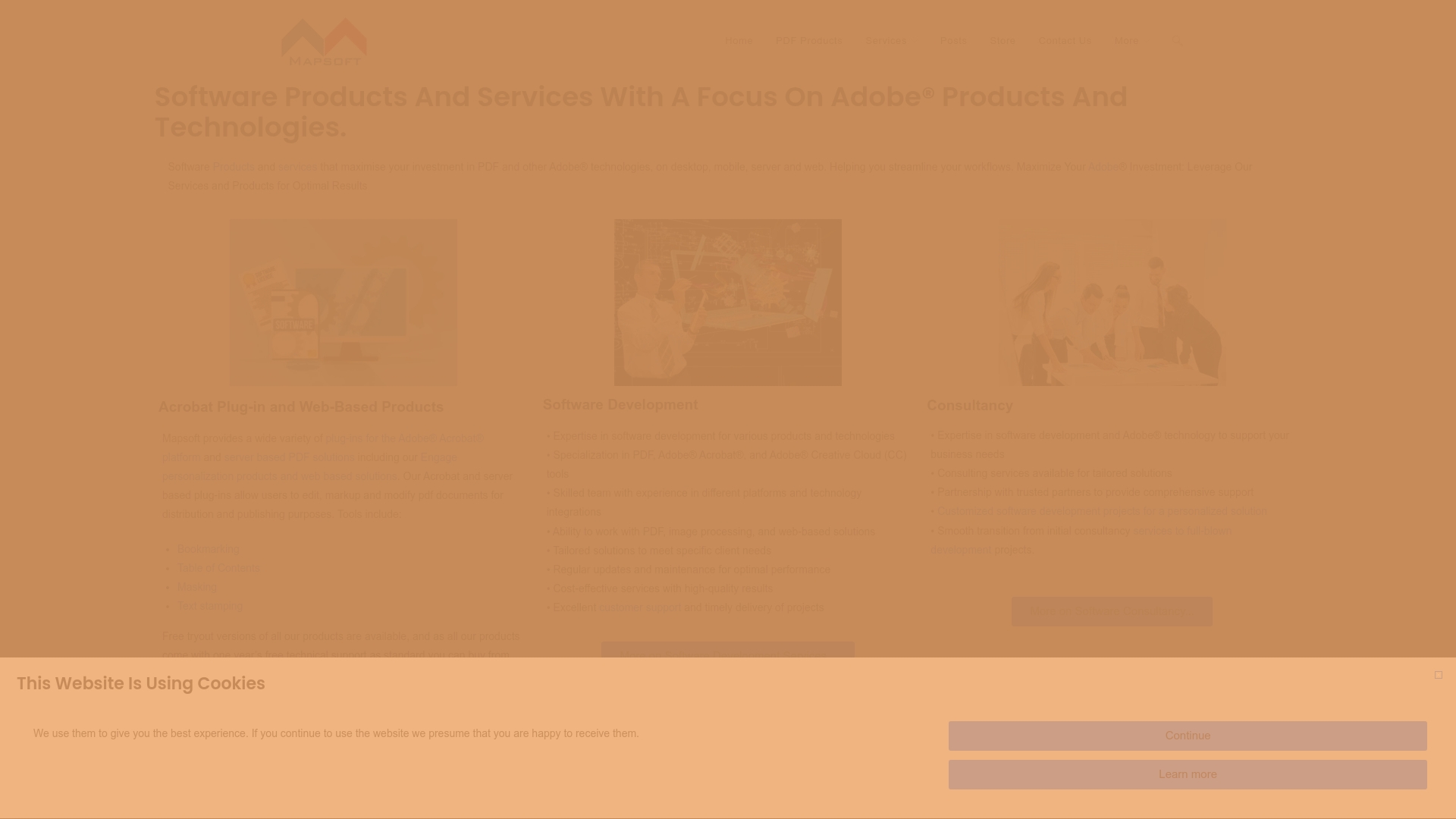Fostering Team collaboration is not just a soft skill anymore. Teams that blend diverse backgrounds generate work with substantially higher long-term impact according to studies of 23 million patents and publications. Most people assume tossing new tech at a group will fix broken workflows, but smart organizations realize that the right tools—like Adobe’s solutions—completely transform how people communicate, solve problems, and innovate together. The surprising part is that the biggest wins come when collaboration becomes a strategic capability, unlocking breakthroughs that no single person could achieve alone.
Table of Contents
- Understanding The Value Of Team Collaboration
- Leveraging Adobe Tools For Seamless Workflows
- Best Practices For It And Workflow Managers
- Measuring Success And Improving Collaboration
Quick Summary
| Takeaway | Explanation |
|---|---|
| Foster diverse teams for better results | Teams with varied expertise generate more innovative and impactful solutions, enhancing overall effectiveness. |
| Implement Adobe tools for efficient workflows | Adobe solutions streamline document management and cross-functional communication, boosting team productivity and collaboration. |
| Focus on strategic tool selection | Choose collaboration tools that align with team needs to minimize disruption and maximize adoption across departments. |
| Measure collaboration performance comprehensively | Utilize both quantitative and qualitative metrics to evaluate team performance and identify improvement areas for collaborative efforts. |
| Create continuous feedback loops | Regular evaluations and open channels for communication help transform insights into actionable strategies for better collaboration. |
Understanding the Value of Fostering Team Collaboration
Team collaboration represents a critical foundation for organizational success in today’s complex work environments. Effective collaboration goes beyond simple communication, transforming how teams generate ideas, solve problems, and drive innovative outcomes.
The Collaborative Advantage in Modern Workplaces
Collaboration is more than a buzzword. According to scientific research analyzing 23 million publications and patents, teams with diverse expertise produce work with significantly greater originality and achieve substantially higher long-term impact. This finding underscores the profound potential of collaborative approaches in generating breakthrough solutions.
The power of team collaboration emerges through several key mechanisms. First, diverse teams bring multiple perspectives, enabling more comprehensive problem-solving. Professionals from different backgrounds can challenge assumptions, introduce novel approaches, and create more robust solutions than individuals working in isolation.
Measuring Collaborative Performance
Research from higher education institutions reveals that team effectiveness is not just about individual skills but also about leadership and emotional intelligence. The study highlighted that organizational culture and work climate act as critical mediators in team performance, suggesting that creating the right environment is just as important as assembling talented individuals.
Successful collaboration requires intentional strategies. Teams must develop shared goals, establish clear communication channels, and cultivate an environment of mutual respect and psychological safety. This means creating spaces where team members feel comfortable sharing ideas, admitting mistakes, and taking calculated risks.
Technology’s Role in Enhancing Collaboration
Modern technological solutions play a pivotal role in facilitating team collaboration. Digital tools enable seamless communication, document sharing, and real-time project management across geographic and organizational boundaries. By breaking down traditional silos, technology empowers teams to work more dynamically and efficiently.
Understanding collaboration’s value means recognizing it as a strategic capability. Organizations that prioritize collaborative practices can unlock unprecedented levels of creativity, productivity, and innovation. Learn more about strategic collaboration techniques that can transform your team’s performance and potential.
By investing in collaborative processes, training, and technological infrastructure, businesses can create environments where collective intelligence thrives, driving meaningful progress and competitive advantage.
Leveraging Adobe Tools for Seamless Workflows
Adobe tools have become essential in creating seamless, efficient workflows that enable teams to collaborate effectively across different projects and organizational boundaries. By integrating advanced digital solutions, businesses can transform how they manage documents, share information, and drive productivity.
Optimizing Document Management and Collaboration
Research examining collaborative practices in professional UX environments reveals that while collaborative tools enhance work processes, they also introduce new challenges like design system management. Adobe solutions address these complexities by providing integrated platforms that streamline document workflows and reduce friction between team members.
Document collaboration requires tools that support real-time editing, version control, and secure sharing. Adobe’s suite of applications enables professionals to work simultaneously on complex projects, tracking changes, maintaining document integrity, and ensuring that team members have access to the most current information.
Enhancing Cross-Functional Communication
Collaboration tools research in Agile software projects emphasizes the critical role of platforms that support task coordination and knowledge sharing. Adobe tools excel in this domain by offering comprehensive features that connect different departments and facilitate smooth information exchange.
Through cloud-based solutions, teams can annotate PDFs, share design assets, provide feedback, and maintain a centralized repository of project documents. This approach reduces communication barriers and ensures that all team members have transparent access to project resources.
Workflow Automation and Efficiency
Modern workplace productivity demands intelligent automation. Adobe solutions provide advanced workflow capabilities that minimize manual tasks, reduce errors, and accelerate project timelines. By implementing automated document routing, approval processes, and integration with existing enterprise systems, organizations can significantly enhance operational efficiency.
Discover advanced strategies for team collaboration that can transform your organizational workflows. These tools not only simplify complex processes but also create a more connected, responsive work environment where creativity and productivity thrive.
By leveraging Adobe’s comprehensive digital workflow solutions, businesses can break down traditional silos, foster more dynamic team interactions, and create a more agile, responsive organizational structure that adapts quickly to changing market demands.
Best Practices for IT and Workflow Managers
IT and workflow managers play a critical role in implementing effective collaboration strategies that leverage Adobe solutions. Their responsibilities extend beyond technical implementation to creating an environment that promotes efficient, secure, and streamlined digital workflows.
Strategic Tool Selection and Implementation
Research on digital collaboration strategies emphasizes the importance of carefully selecting collaboration tools that align with organizational needs. IT managers must consider factors beyond technical specifications, focusing on tools that enhance team communication, reduce friction, and support existing work processes.
Choosing the right Adobe solutions requires a comprehensive approach. According to Adobe’s resource guide, organizations should follow a five-step process that includes understanding team requirements, prioritizing user-friendly features, and ensuring compatibility with existing systems. This strategic approach minimizes disruption and maximizes tool adoption across different departments.
To help IT and workflow managers make decisions about collaboration tool implementation, the following table summarizes the five-step process for selecting Adobe solutions, as outlined in the article.
| Step | Description |
|---|---|
| 1. Understand team requirements | Assess team needs and current pain points to ensure solutions align with business goals. |
| 2. Prioritize user-friendly features | Focus on intuitive tools that encourage quick adoption and reduce learning curves. |
| 3. Ensure system compatibility | Choose solutions that integrate seamlessly with existing enterprise systems. |
| 4. Minimize disruption | Select technologies that have minimal impact on current workflows during implementation. |
| 5. Maximize adoption | Promote acceptance and usage across departments through strategic rollout and training. |
Ensuring Seamless Design and Workflow Integration
Design collaboration research highlights the critical role of tools like Adobe XD in facilitating team collaboration. IT managers must focus on implementing solutions that provide features such as interactive prototypes, design annotations, and shared asset libraries. These capabilities ensure consistency, reduce communication gaps, and streamline the design and review processes.
Effective workflow integration involves more than just installing software. Managers need to develop comprehensive training programs, establish clear usage guidelines, and create standardized processes that leverage the full potential of Adobe collaboration tools. This approach helps teams adapt quickly and work more efficiently across different projects and departments.
Security and Compliance Considerations
In an era of increasing digital risks, IT managers must prioritize security and compliance when implementing collaboration solutions. This means configuring Adobe tools with robust access controls, implementing multi-factor authentication, and establishing clear protocols for document sharing and version management.
Explore advanced strategies for optimizing business processes that can help organizations create more secure, efficient workflows. By taking a proactive approach to tool selection, integration, and security, IT managers can transform collaboration from a technical challenge into a strategic advantage.
Successful implementation of Adobe collaboration solutions requires a holistic approach that balances technological capabilities with organizational culture, user needs, and strategic objectives. IT and workflow managers are the critical bridge that connects technological potential with practical, impactful workplace collaboration.

Measuring Success and Improving Collaboration
Measuring collaboration effectiveness requires a strategic and multidimensional approach that goes beyond traditional performance metrics. Organizations must develop comprehensive frameworks that capture the nuanced aspects of team interactions, productivity, and innovative potential.
Quantifying Collaborative Performance
Research investigating teamwork quality in software development revealed critical factors that significantly impact team performance. The study identified three fundamental teamwork quality dimensions: trust, shared values, and coordination of expertise. These factors explained 81% of team performance variance as rated by team members, highlighting the complexity of measuring collaborative success.

Effective measurement involves tracking both quantitative and qualitative indicators. Metrics might include project completion rates, communication frequency, cross-departmental knowledge transfer, and the number of collaborative solutions generated. Adobe tools provide advanced analytics that help organizations monitor these key performance indicators, offering insights into team dynamics and collaborative effectiveness.
The following table summarizes key metrics and evaluation dimensions mentioned in the section on measuring collaboration effectiveness. This helps organizations focus on what matters when tracking and improving team collaboration.
| Metric / Dimension | Description |
|---|---|
| Trust | Level of confidence and reliability among team members |
| Shared Values | Degree of alignment in goals, expectations, and norms |
| Coordination of Expertise | Effectiveness in leveraging diverse skills for task completion |
| Project Completion Rate | Frequency of successfully finished projects |
| Communication Frequency | How often team members interact and exchange information |
| Knowledge Transfer | Amount of cross-departmental sharing of expertise and best practices |
| Collaborative Solutions Count | Number of solutions created through joint team effort |
| Qualitative Feedback | Insights from open-ended team assessments or feedback channels |
Advanced Evaluation Frameworks
An integrative review of research collaboration measurement emphasizes the need for comprehensive evaluation approaches. Organizations should consider multiple dimensions such as process quality, productivity, innovation potential, and tangible outcomes.
Emergent technologies are transforming collaboration measurement. Experimental studies on generative AI demonstrate how advanced tools can enhance problem-solving skills and creativity, providing new methods for assessing team performance beyond traditional metrics.
Continuous Improvement Strategies
Measurement is only valuable when coupled with actionable insights. Organizations must create feedback loops that translate collaborative performance data into meaningful improvements. This involves regular team assessments, open communication channels, and adaptive training programs that address identified collaboration gaps.
Explore advanced collaboration improvement techniques to transform your team’s performance. By implementing data-driven strategies and leveraging Adobe’s sophisticated collaboration tools, businesses can create environments that continuously evolve and optimize team interactions.
Successful collaboration measurement requires a holistic approach that balances technological capabilities, human dynamics, and strategic objectives. Organizations that master this approach can unlock unprecedented levels of team performance, innovation, and organizational resilience.
Frequently Asked Questions
What are the benefits of using Adobe solutions for team collaboration?
Adobe solutions enhance team collaboration by streamlining document management, enabling real-time communication, and facilitating cross-functional information sharing, which boosts overall productivity and efficiency.
How can I optimize my team’s document management with Adobe tools?
To optimize document management, utilize Adobe’s features like real-time editing, version control, and secure sharing options, which help teams collaborate on projects without confusion or interruptions.
What strategies can improve collaboration using Adobe software?
Improving collaboration can be achieved by selecting user-friendly Adobe tools, ensuring seamless integration with existing workflows, and fostering an open communication culture among team members.
How can organizations measure the effectiveness of collaboration using Adobe solutions?
Organizations can measure collaboration effectiveness by tracking metrics such as project completion rates, communication frequency, and the number of collaborative solutions generated through Adobe tools.
Transform Team Collaboration into Real Results with Mapsoft Solutions
Struggling to make team collaboration truly seamless despite investing in advanced tools? This article highlighted how even with Adobe solutions, organizations often hit roadblocks managing complex document workflows, misaligned communication, and the challenges of consistent file handling across departments. Your goals are clear: Make collaboration smarter, automate tedious PDF tasks, and unlock the full power of shared creativity. Mapsoft.com exists to help you bridge that gap.

Imagine if your team could turn collaborative ideas into flawless, secure business documents—without bottlenecks, confusion, or wasted time. Mapsoft.com’s PDF Hub platform and custom Acrobat plug-ins empower teams to manage, convert, and automate PDF workflows with ease. Whether you need batch processing, document security, or seamless integration with Creative Cloud, you can count on solutions designed for true enterprise productivity. Visit Mapsoft.com now to see how your organization can finally make team collaboration not just possible but effortless. Get started and put your Adobe investment to work for you today.



